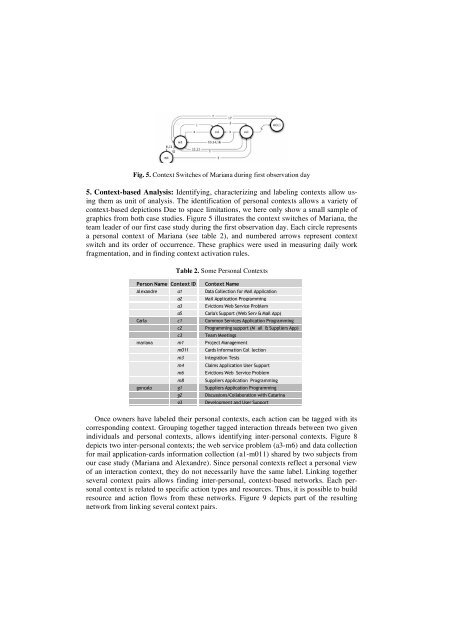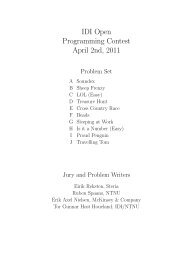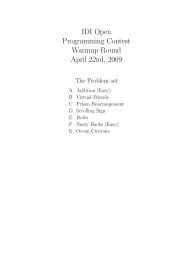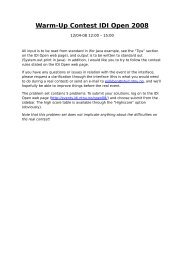Reverse-engineering of individual and inter-personal work practices
Reverse-engineering of individual and inter-personal work practices
Reverse-engineering of individual and inter-personal work practices
- No tags were found...
Create successful ePaper yourself
Turn your PDF publications into a flip-book with our unique Google optimized e-Paper software.
Fig. 5. Context Switches <strong>of</strong> Mariana during first observation day5. Context-based Analysis: Identifying, characterizing <strong>and</strong> labeling contexts allow usingthem as unit <strong>of</strong> analysis. The identification <strong>of</strong> <strong>personal</strong> contexts allows a variety <strong>of</strong>context-based depictions Due to space limitations, we here only show a small sample <strong>of</strong>graphics from both case studies. Figure 5 illustrates the context switches <strong>of</strong> Mariana, theteam leader <strong>of</strong> our first case study during the first observation day. Each circle representsa <strong>personal</strong> context <strong>of</strong> Mariana (see table 2), <strong>and</strong> numbered arrows represent contextswitch <strong>and</strong> its order <strong>of</strong> occurrence. These graphics were used in measuring daily <strong>work</strong>fragmentation, <strong>and</strong> in finding context activation rules.Person Name Context IDTable 2. Some Personal ContextsContext NameAlex<strong>and</strong>re a1 Data Collection for Mail Applicationa2a3Mail Application ProgrammingEvictions Web Service Problema5 Carla's Support (Web Serv & Mail App)Carla c1 Common Services Application Programmingc2c3Programming support (M ail & Suppliers App)Team Meetingsmariana m1 Project Managementm011m3Cards Information Col lectionIntegration Testsm4 Claims Application User Supportm6Evictions Web Service Problemm8 Suppliers Application Programminggoncalo g1 Suppliers Application Programmingg2 Discussions/Collaboration with Catarinag3Development <strong>and</strong> User SupportOnce owners have labeled their <strong>personal</strong> contexts, each action can be tagged with itscorresponding context. Grouping together tagged <strong>inter</strong>action threads between two given<strong>individual</strong>s <strong>and</strong> <strong>personal</strong> contexts, allows identifying <strong>inter</strong>-<strong>personal</strong> contexts. Figure 8depicts two <strong>inter</strong>-<strong>personal</strong> contexts; the web service problem (a3-m6) <strong>and</strong> data collectionfor mail application-cards information collection (a1-m011) shared by two subjects fromour case study (Mariana <strong>and</strong> Alex<strong>and</strong>re). Since <strong>personal</strong> contexts reflect a <strong>personal</strong> view<strong>of</strong> an <strong>inter</strong>action context, they do not necessarily have the same label. Linking togetherseveral context pairs allows finding <strong>inter</strong>-<strong>personal</strong>, context-based net<strong>work</strong>s. Each <strong>personal</strong>context is related to specific action types <strong>and</strong> resources. Thus, it is possible to buildresource <strong>and</strong> action flows from these net<strong>work</strong>s. Figure 9 depicts part <strong>of</strong> the resultingnet<strong>work</strong> from linking several context pairs.







